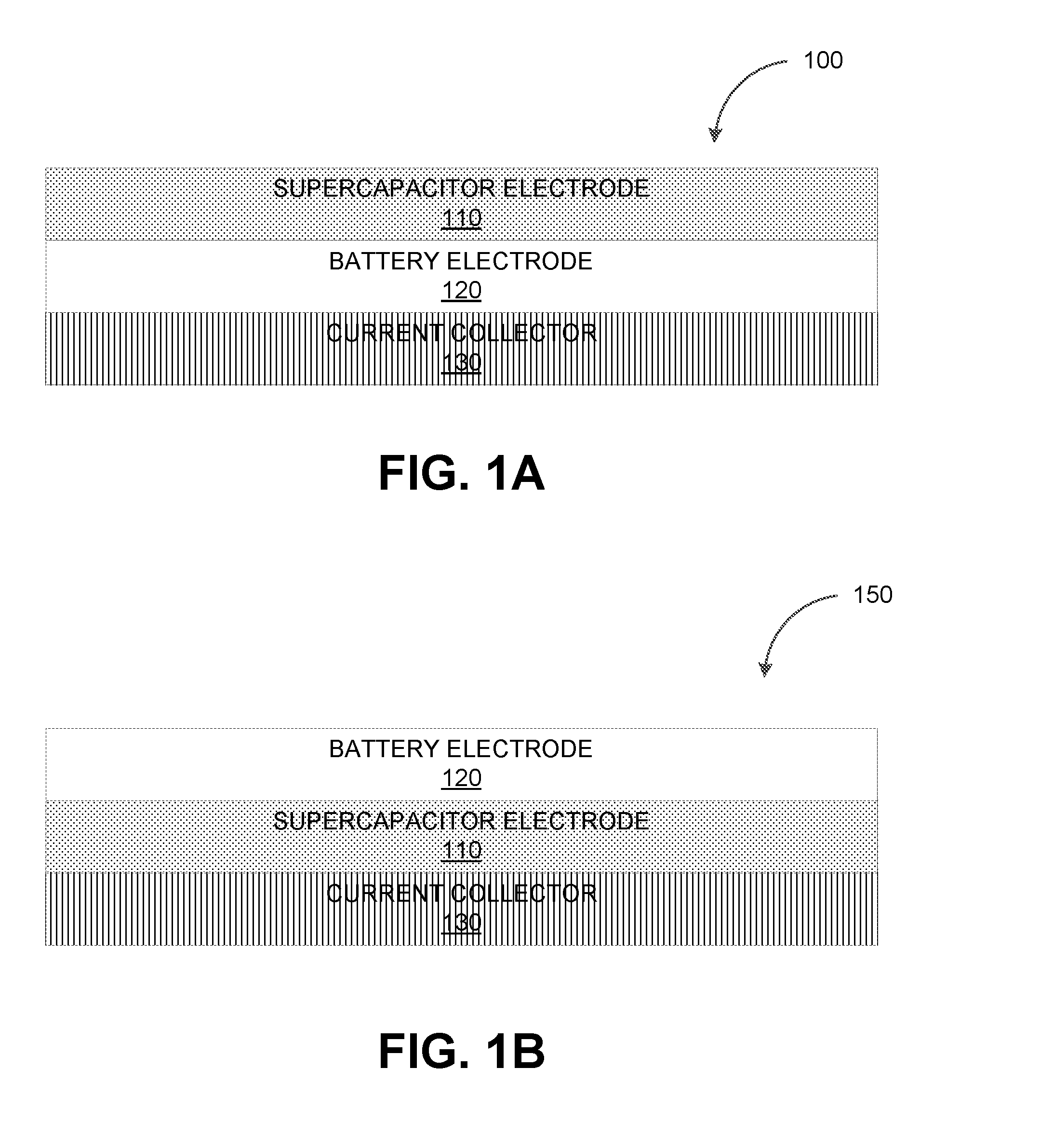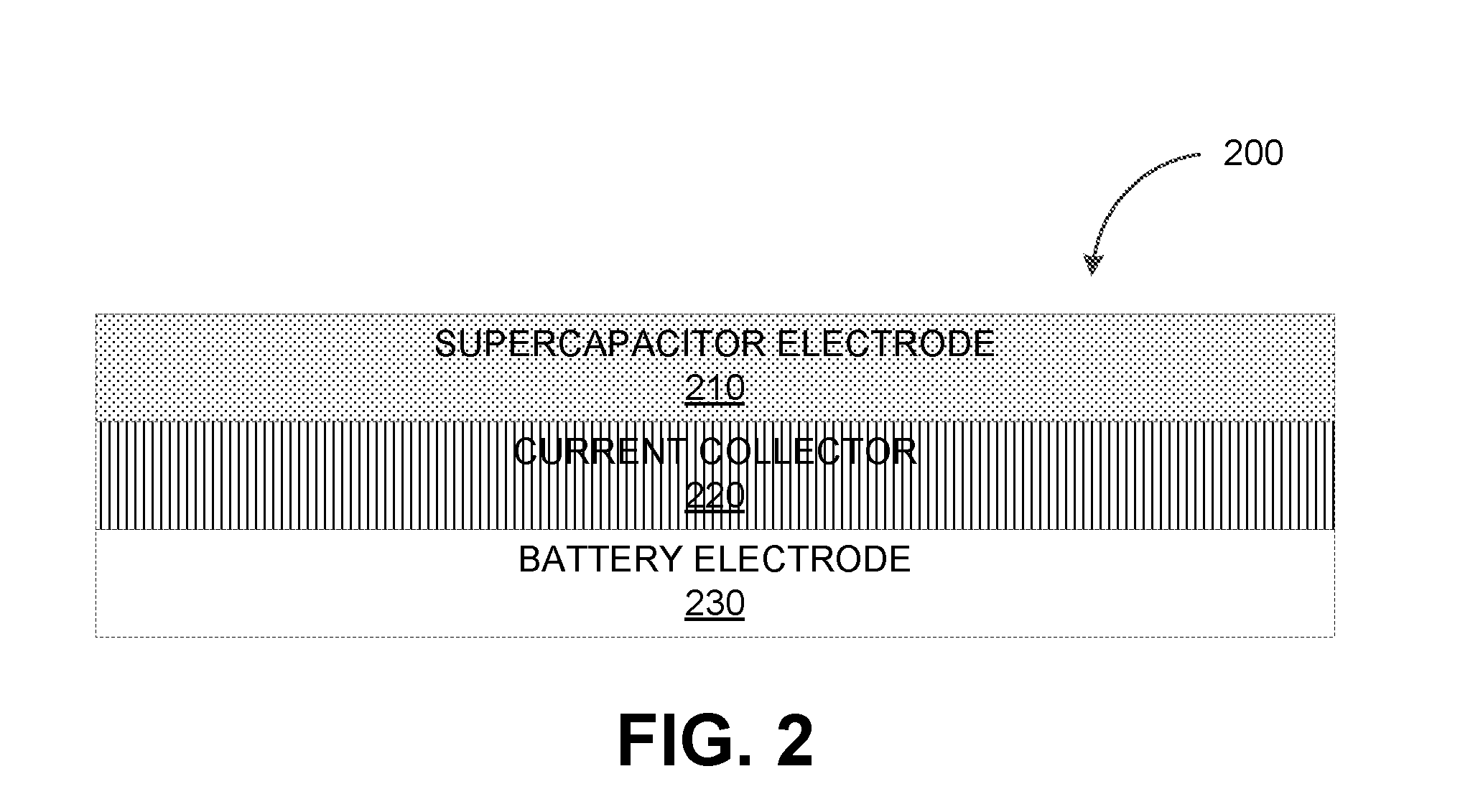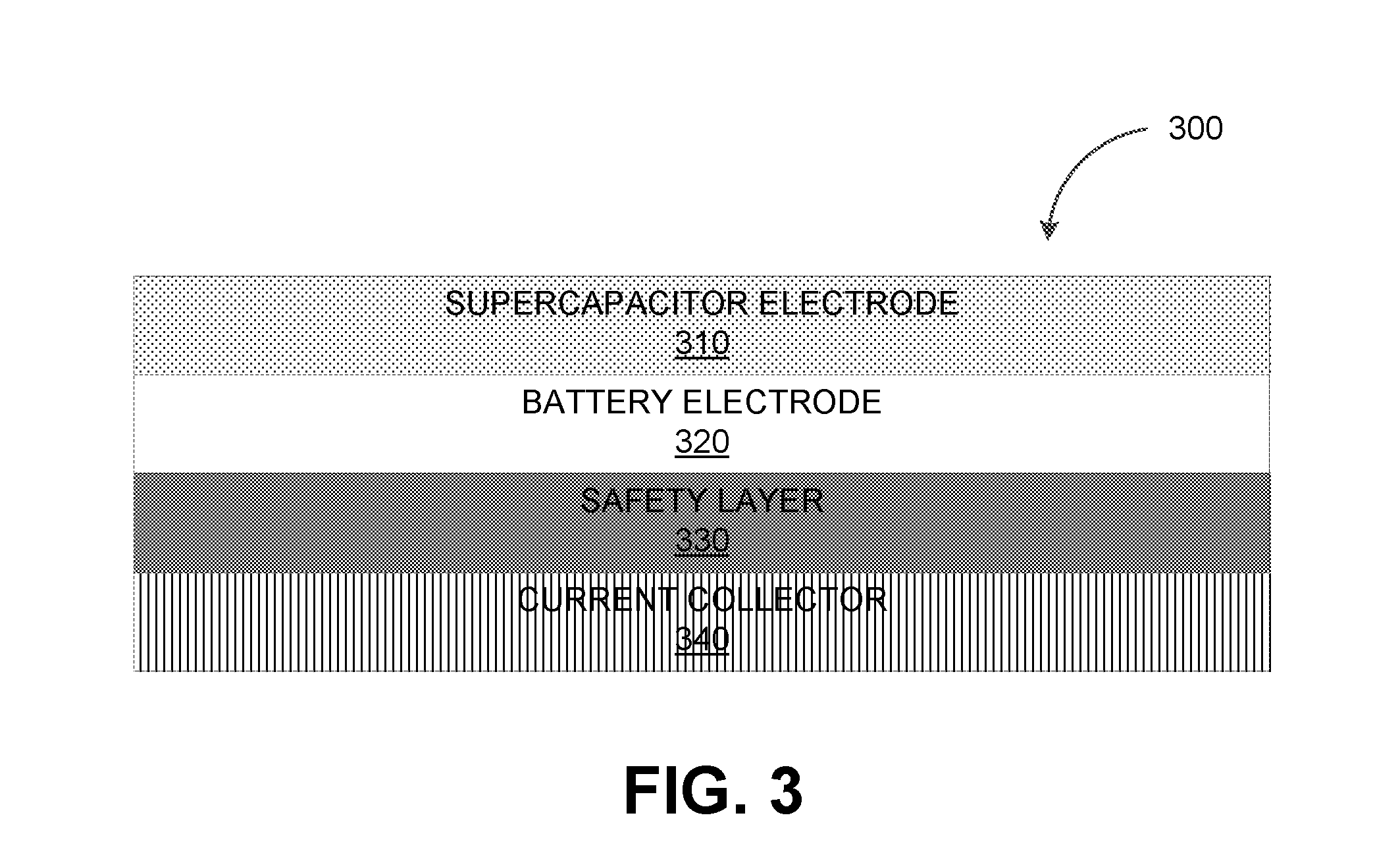Battery and supercapacitor hybrid
a supercapacitor and battery technology, applied in the field of batteries, can solve the problems of limited charging speed, poor power density of conventional batteries, fire and explosion, etc., and achieve the effects of improving the power density of lithium ion batteries, higher charging current, and high charging ra
- Summary
- Abstract
- Description
- Claims
- Application Information
AI Technical Summary
Benefits of technology
Problems solved by technology
Method used
Image
Examples
example 1
[0060]A battery and supercapacitor hybrid with a disordered carbon negative electrode and a positive hybrid electrode. The supercapacitor electrode is disposed on top of the battery electrode in the positive hybrid electrode.
[0061](A) Formulation: Table 1 lists the respective formulations for the battery anode, the positive supercapacitor electrode, and the negative electrode.
TABLE 1Percentage Electrode IDComponent Materials(%)Battery Anode (first layer)LiNi0.4Mn0.3Co0.3O2 (NMC433)92Carbon black3xGnP-R-10 (Graphene)1PVDF (Polyvinylidene fluoride)4Positive SupercapacitorYP-50F (Active carbon)87.5Electrode (second layer)Carbon black2.5TF-4000 (cross-linkable binder)5PVDF5Negative ElectrodeDisordered carbon92.7Carbon black No. 12xGnP-R-101CMC (Carboxymethyle1.5Cellulose)SBR (Styrene-Butadiene2.8Rubber)
[0062](B) Electrode Preparation:
[0063](a) Battery Anode (First Layer)
[0064](i) Combine 48 grams (g) of polyvinylidene fluoride (PVDF) with 600 g of N-methyl-2-pyrrolidone (NMP). Stir the ...
example no.2
Example No. 2
[0071]A battery and supercapacitor hybrid with a disordered carbon negative electrode and a battery anode disposed on the top of a safety layer:
[0072](A) Formulation: Table 2 lists the respective formulations the battery anode, the safety layer, and the negative electrode.
TABLE 2ElectrodeComponent MaterialsPercentage (%)Safety Layer CaCO3 (Calcium carbonate)80.2(first layer) Carbon black5.8TF-4000 (cross-linkable binder)2PVDF12Battery Anode NMC43392(second layer) Carbon black3xGnP-R-10 (Graphene)1PVDF-A4Negative Coke92.7Electrode Super-P2xGnP-R-101CMC1.5SBR2.8
[0073](B) Preparation:
[0074](a) Safety Layer (First Layer)
[0075](i) Dissolve 2 g of TF-4000 into 20 g of NMP and stir at a low rate for at least 12 hours; ii) Dissolve 12 g of PVDF into 150 g of NMP, mix, and store for at least 12 hours; (iii) Add 5.8 g of carbon black into the solution prepared in operation (ii) and mix for 30 minutes at a rate of 5000 rpm; iv) Add 80.2 g of CaCO3 to the slurry prepared in operati...
PUM
| Property | Measurement | Unit |
|---|---|---|
| thickness | aaaaa | aaaaa |
| thickness | aaaaa | aaaaa |
| thick | aaaaa | aaaaa |
Abstract
Description
Claims
Application Information
 Login to View More
Login to View More - R&D
- Intellectual Property
- Life Sciences
- Materials
- Tech Scout
- Unparalleled Data Quality
- Higher Quality Content
- 60% Fewer Hallucinations
Browse by: Latest US Patents, China's latest patents, Technical Efficacy Thesaurus, Application Domain, Technology Topic, Popular Technical Reports.
© 2025 PatSnap. All rights reserved.Legal|Privacy policy|Modern Slavery Act Transparency Statement|Sitemap|About US| Contact US: help@patsnap.com



